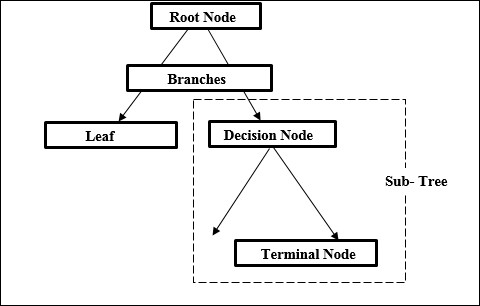A tree is a data structure that might be used to state certain decision rules because it can be represented in such a way as to pictorially illustrate these rules. A tree has three basic elements: nodes, branches, and leaves. Nodes are the points from where one or more branches come out. A node from where no branch originates is a leaf. A typical tree looks as follows:

Fig. 8.1: A representation of a decision tree with its basic elements—node, branches, and leaves
A tree, specifically a decision tree, starts with a root node, proceeds to the decision nodes, and ultimately to the terminal nodes where the decision rules are made. All nodes, except the terminal node, represent one variable and the branches represent the different categories (values) of that variable. The terminal node represents the final decision or value for that route.



